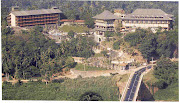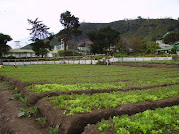 Sri Lanka Holidays
Sri Lanka Holidays
Hydraulic Engineering vs. Water & Soil Conservation Ecosystems in Sri Lanka Part 2
Ancient Sinhalese of Sri Lanka, the protectors of United Biology
Following is an excerpt from “Separate Opinion” of Christopher Weeramantry of Sri Lanka, then Vice president of the International Court of Justice at Gabcikovo-Nagymaros Project case between Hungary & Slovakia in relation to the harnessing of the waters of the Danube.
The concept of reconciling the needs of development with the protection of the environment is thus not new. Millennia ago these concerns were noted and their twin demands well reconciled in a manner so meaningful as to carry a message to our age.
I shall start with a system with which I am specially familiar, which also happens to have specifically articulated these two needs–development and environmental protection-in its ancient literature. I refer to the ancient irrigation-based civilization of Sri Lanka.
It is a system which, while recognizing the need for development and vigorously implementing schemes to this end, at the same time specifically articulated the need for environmental protection and ensured that the technology it employed paid due regard to environmental considerations. This concern for the environment was reflected not only in its literature and its technology, but also in its legal system, for the felling of certain forests was prohibited, game sanctuaries were established, and royal edicts decreed that the natural resource of water was to be used to the last drop without any wastage.
This system, some details of which I shall touch on, is described by Arnold Toynbee in his panoramic survey of civilizations. Referring to it as an "amazing system of waterworks”, Toynbee describes how hill streams were tapped and their water guided into giant storage tanks, some of them four thousand acres in extent from which channels ran on to other larger tanks. Below each great tank and each great channel were hundreds of little tanks, each the nucleus of a village.
The concern for the environment shown by this ancient irrigation system has attracted study in a recent survey of the Social and Environmental Effects of Large Dams, which observes that among the environmentally related aspects of its irrigation systems were the "erosion control tank" which dealt with the problem of silting by being so designed as to collect deposits of silt before they entered the main water storage tanks. Several erosion control tanks were associated with each village irrigation system.
The significance of this can well be appreciated in the context of the present case, where the problem of silting has assumed so much importance. Another such environmentally related measure consisted of the "forest tanks" which were built in the jungle above the village, not for the purpose of irrigating land, but to provide water to wild animals.
This system of tanks and channels, some of them two thousand years old, constitute in their totality several multiples of the irrigation works involved in the present scheme. They constituted development as it was understood at the time, for they achieved in Toynbee's words, "the arduous feat of conquering the parched plains of Ceylon for agriculture. Yet they were executed with meticulous regard for environmental concerns, and showed that the concept of sustainable development was consciously practiced over two millennia ago with much success.
Under this irrigation system, major rivers were dammed and reservoirs created, on a scale and in a manner reminiscent of the damming which the Court saw on its inspection of the dams in this case. This ancient concept of development was carried out on such a large scale that, apart from the major reservoirs of which there were several dozen, between 25,000 and 30,000 minor reservoirs were fed from these reservoirs through an intricate network of annals.
The philosophy underlying this gigantic system which for upwards of two thousand years served the needs of man and nature alike, was articulated in a famous principle laid down by an outstanding monarch that "not even a little water that comes from the rain is to flow into the ocean without being made useful to man”. According to the ancient chronicle these works were undertaken "for the benefit of the country" and "out of compassion for all living creatures”. This complex of irrigation works was aimed at making the entire country a granary. They embodied the concept of development par excellence.
Just as development was the aim of this system, it was accompanied by a systematic philosophy of conservation dating back to at least the third century BC. The ancient chronicles record that when the King (Devanampiya Tissa, 247-207 BC) was on a hunting trip (around 223 BC), the Arahat Mahinda, son of the Emperor Asoka of India, preached to him that sermon: "O great King, the birds of the air and the beasts have as equal a right to live and move about in any part of the land as thou. The land belongs to the people and all living beings; thou art only the guardian of it."
This sermon, which indeed contained the first principle of modern environmental law - the principle of trusteeship of earth resources- caused the king to start sanctuaries for wild animals - a concept which continued to be respected for over twenty centuries. The traditional legal system's protection of fauna and flora, based on this Buddhist teaching, extended well into the eighteenth century. The sermon also pointed out that even birds and beasts have a right to freedom from fear.
The notion of not causing harm to others and hence sic utere tuo ut alienum non luedus was a central notion of Buddhism. It translated well into environmental attitudes. "Alienurn "in this context would be extended by Buddhism to future generations as well, and to other component elements of the natural order beyond man himself, for the Buddhist concept of duty had an enormously long reach.
This marked concern with environmental needs was reflected also in royal edicts, dating back to the third century BC, which ordained that certain primeval forests should on no account be felled. This was because adequate forest cover in the highlands was known to be crucial to the irrigation system as the mountain jungles intercepted and stored the monsoon rains. They attracted the rain which fed the river and irrigation systems of the country, and were therefore considered vital. Environmental considerations were reflected also in the actual work of construction and engineering. The ancient engineers devised an answer to the problem of silting (which has assumed much importance in the present case), and they invented a device (the bisokotuwa or valve pit),the counterpart of the sluice, for dealing with this environmental problem, by controlling the pressure and the quantity of the outflow of water when it was released from the reservoir were also built, as in the case of the construction involved in this case, for raising the levels of river water and regulating its flow.
This juxtaposition in this ancient heritage of the concepts of development and environmental protection invites comment immediately from those familiar with it. Anyone interested in the human future would perceive the connection between the two concepts and the manner of their reconciliation. Not merely from the legal perspective does this become apparent, but even from the approaches of other disciplines.
Thus Arthur C. Clarke, the noted futurist, with that vision which has enabled him to bring high science to the service of humanity, put his finger on the precise legal problem we are considering when he observed:
"the small Indian Ocean island . . . provides textbook examples of many modern dilemmas: development versus environment and proceeds immediately to recapitulate the famous sermon, already referred to, relating to the trusteeship of land, observing, "For as King Devanampiya Tissa was told three centuries before the birth of Christ, we are its guardians - not its owner
The task of the law is to convert such wisdom into practical terms
For Part 1 click here
Sri Lanka is a classic example of the "hydraulic civilization" which had developed in the ancient period.








































































































0 Comments:
Post a Comment